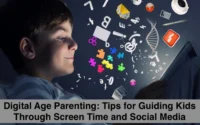How to Handle Toddler Tantrums Calmly and Effectively
Toddler tantrums are a normal and unavoidable part of parenting. These emotional outbursts typically occur when toddlers feel overwhelmed, frustrated, or unable to communicate their needs effectively. For parents, handling tantrums can feel exhausting and stressful, but staying calm is crucial. How you respond to tantrums can shape how your child learns to deal with their emotions. By understanding the root causes and applying practical strategies, you can manage these episodes in a way that fosters emotional growth and a stronger parent-child bond. Learning how to handle toddler tantrums can help make these moments more manageable and productive.
Understanding Toddler Tantrums
Tantrums are your toddler’s way of expressing big emotions they don’t yet know how to handle. Common triggers include hunger, tiredness, frustration, or overstimulation. For example, a toddler may have a meltdown when they want something but cannot communicate it clearly. At this age, their brain is still developing, and they lack the skills to regulate their emotions. Recognizing that tantrums are part of normal development can help you approach these situations with patience and empathy instead of frustration or anger.
Preparing for Tantrums
Preparation plays a significant role in preventing tantrums. Establishing a consistent daily routine gives toddlers a sense of security and helps reduce uncertainty, which can often lead to outbursts. Make sure your toddler gets plenty of sleep, as fatigue can quickly trigger tantrums. Likewise, ensure regular mealtimes to avoid hunger-related crankiness. Teaching your toddler basic words or gestures to express their feelings, like pointing to objects or saying “angry,” can empower them to communicate better. These small steps can reduce the likelihood of tantrums and help your child feel understood.
Staying Calm During a Tantrum
It’s easy to feel overwhelmed when your toddler throws a tantrum, but staying calm is one of the most effective ways to handle the situation. Remember, your reaction sets the tone for how the tantrum will progress. Take a deep breath and remind yourself that your child is not being bad—they’re simply unable to express their emotions. Avoid yelling, as this can escalate the tantrum. Instead, maintain a calm and steady tone, even if your toddler is screaming. Your composure reassures them and creates a safe space for emotional release.
Handling the Tantrum Effectively
- Ignore minor tantrums: Not all tantrums require intervention. If your child is having a mild outburst to seek attention, try ignoring it. When they see that tantrums won’t achieve their goal, they may stop using this behavior.
- Validate their feelings: Acknowledge your child’s emotions by saying, “I see you’re upset because you can’t have the toy.” This helps them feel heard and understood, which can calm them down.
- Offer comfort: When tantrums are caused by genuine distress, offering a hug or soothing words like “It’s okay, I’m here” can help. This reassures them that you’re there to support them, even when they’re upset.
- Distract and redirect: Shift their attention to something else. For example, if they’re upset about a toy, offer another activity or toy that interests them. This helps break the cycle of frustration.
- Use consequences if necessary: If the tantrum involves unacceptable behavior like hitting, calmly set boundaries. For instance, say, “We don’t hit. If you continue, we’ll need to stop playing.” Be firm but gentle.
Preventing Future Tantrums
The best way to handle tantrums is to reduce their frequency by teaching your toddler better ways to cope. Offer them choices whenever possible. For example, let them choose between two snacks or two shirts to wear. This gives them a sense of control and minimizes frustration. Praise your toddler when they use words or gestures to express emotions instead of having an outburst. Preparing them for transitions—such as leaving the park or starting bedtime—can also help prevent meltdowns. Simple warnings like “We’ll leave in five minutes” make transitions smoother.
When to Seek Help
While most tantrums are harmless, certain patterns may signal an underlying issue. For example, if your toddler’s tantrums are extremely frequent, last longer than 20 minutes, or involve harm to themselves or others, it might be time to consult a professional. Developmental delays, sensory sensitivities, or other challenges could be contributing factors. A pediatrician or child psychologist can evaluate your child’s behavior and offer guidance tailored to their needs. Early intervention can make a big difference in helping your toddler navigate their emotions effectively.
Handling toddler tantrums requires patience, consistency, and understanding. How to handle toddler tantrums effectively is a skill that can transform these challenging moments into learning opportunities. These outbursts are a normal part of your child’s growth as they learn to manage their emotions. By staying calm, validating their feelings, and using effective strategies, you can turn tantrum moments into opportunities for teaching and connection. Over time, with guidance and positive reinforcement, your toddler will develop the skills to handle their emotions more calmly. Remember, your response today will help shape their ability to deal with challenges tomorrow. Stay consistent, and the results will be worth it when you know how to handle toddler tantrums with confidence.


